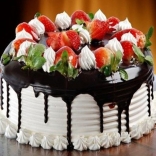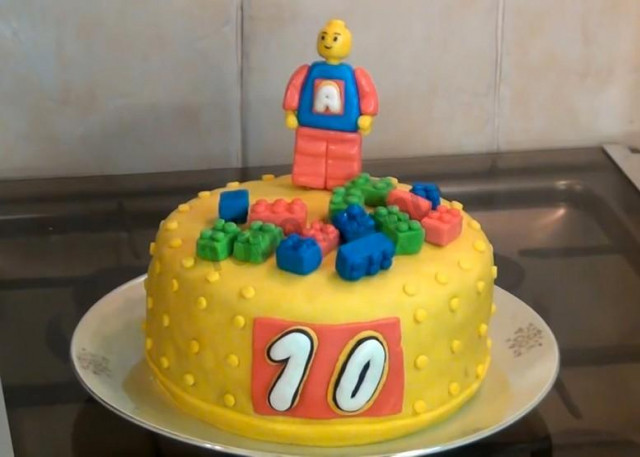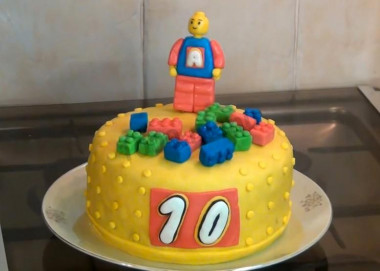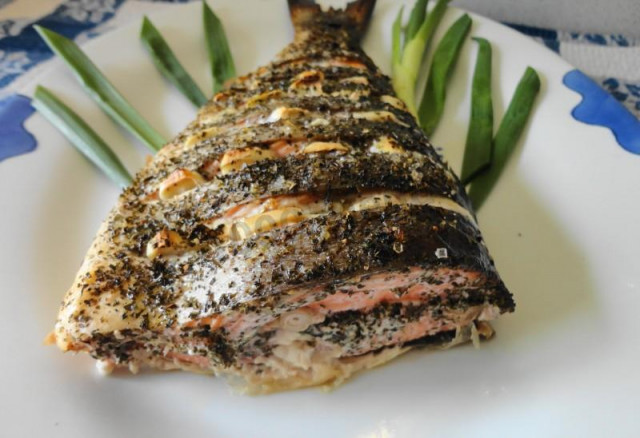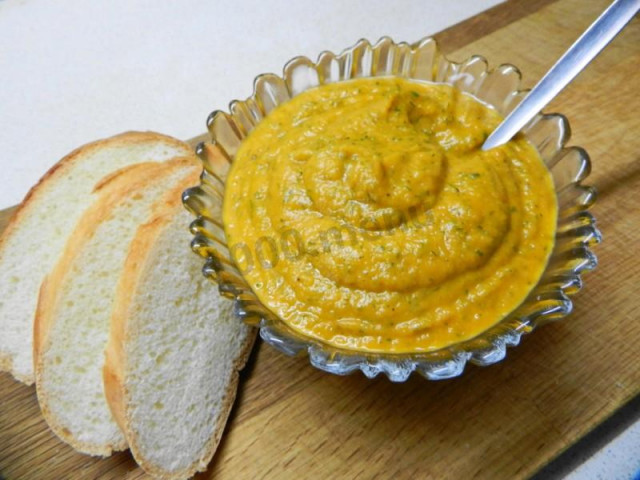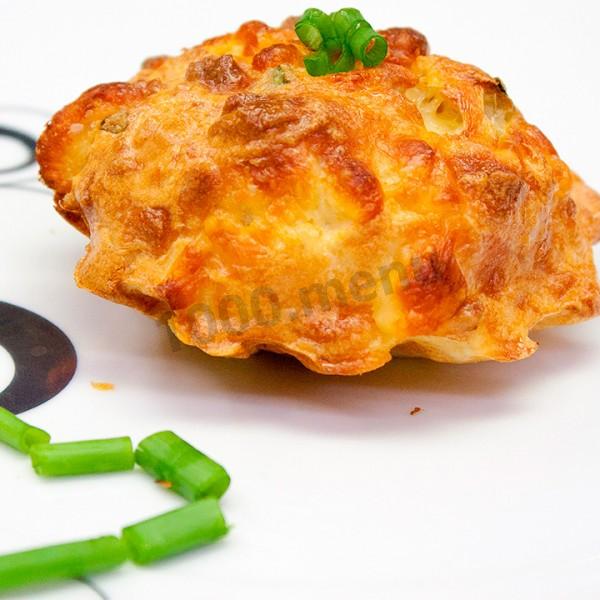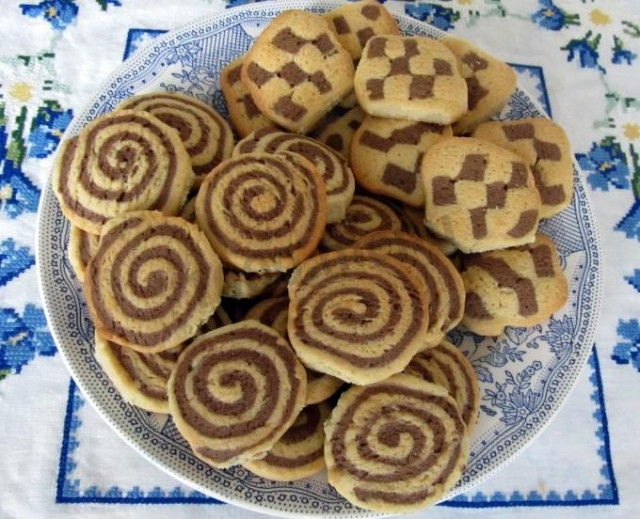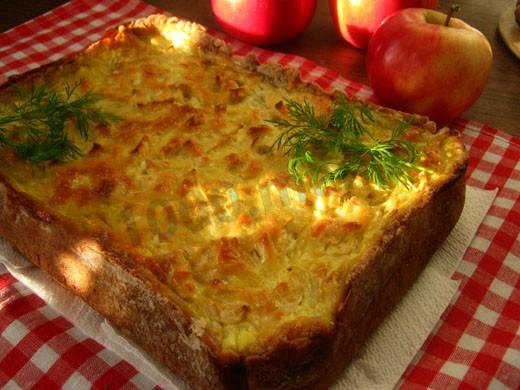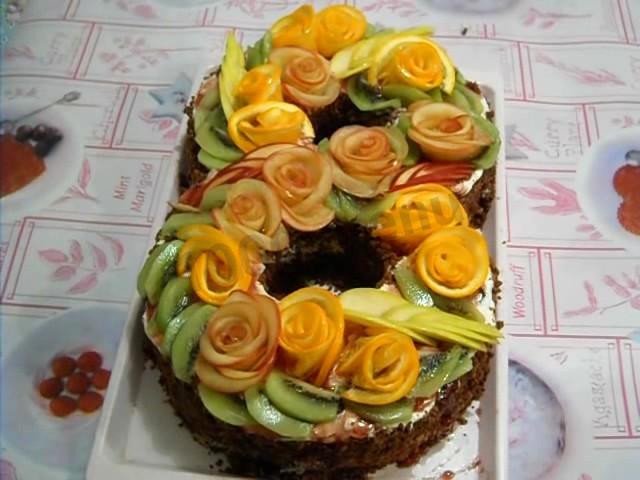Composition / ingredients
Step-by-step cooking
Step 1:
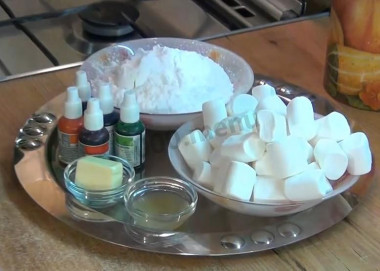
Prepare the necessary products for mastic: marshmallow, powdered sugar, butter, lemon juice and dyes.
Step 2:
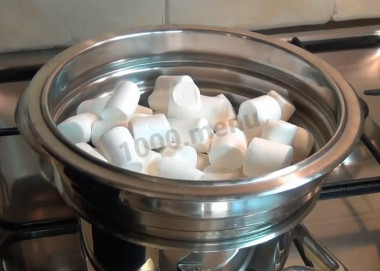
Put marshmallows in a saucepan on a steam bath, add lemon juice and oil. And we wait 5-7 minutes until the marshmallows are completely melted.
Step 3:
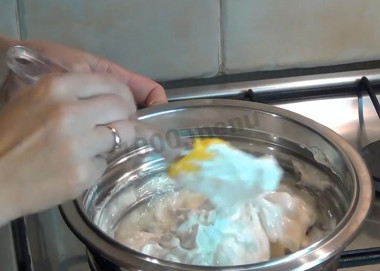
Check if all the marshmallows are melted into a homogeneous mass and remove from the bath.
Step 4:
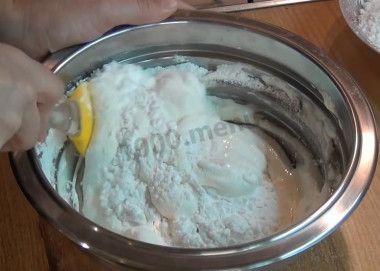
Gradually introduce powdered sugar and mix with a spatula.
Step 5:
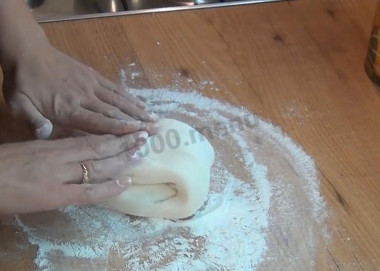
When the mastic begins to thicken and it will be impossible to interfere with the spatula, we knead the mastic with our hands like dough, adding powdered sugar as needed.
Step 6:
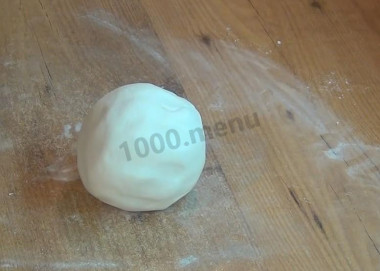
The finished mastic rolled into a ball holds its shape and does not sag.
Step 7:
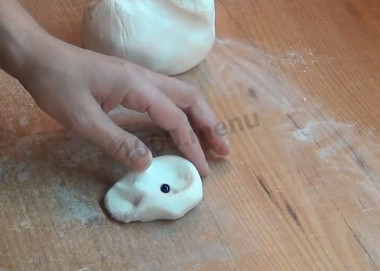
Drop by drop, add a dye to a small piece of mastic. We knead and achieve the desired color.
Step 8:
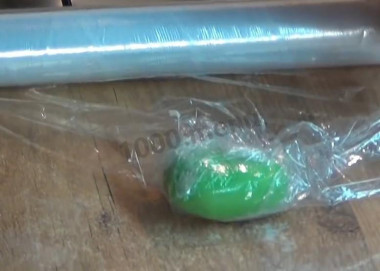
While we are making mastic of other colors, ready-made mastic, so that it does not dry out, we wrap it in a film and send it to the refrigerator.
Step 9:
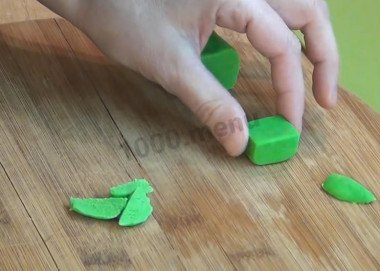
We make designer parts from the resulting mastic as from plasticine. First we make a brick.
Step 10:
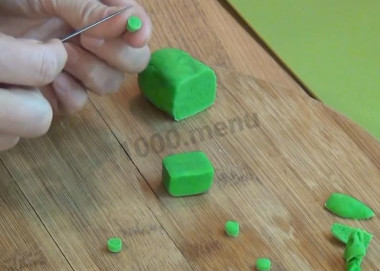
We squeeze out circles from the scraps using a tube. We moisten them with water on one side.
Step 11:
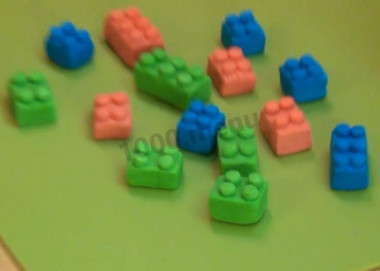
Glue the circles on the bricks, achieving similarity with the details of the designer. We sculpt a Lego man from nature or from a color image from mastic. We leave everything to dry at room temperature.
Step 12:
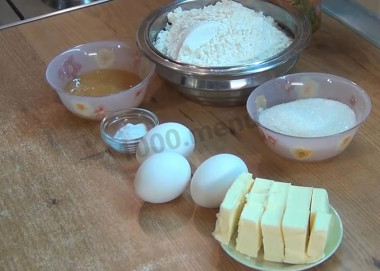
We take everything necessary for the dough for cakes: flour, sugar, butter, eggs, soda, honey.
Step 13:
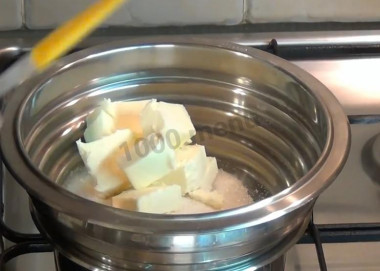
We put sugar, butter and honey in a saucepan on a steam bath. Melt everything to a homogeneous liquid mass.
Step 14:
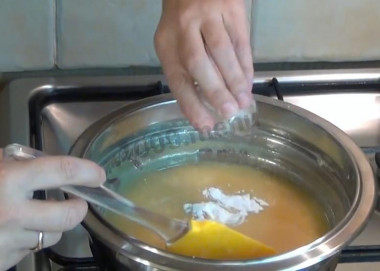
Add soda, stir and let it boil for a minute. During this time, you can beat the eggs.
Step 15:
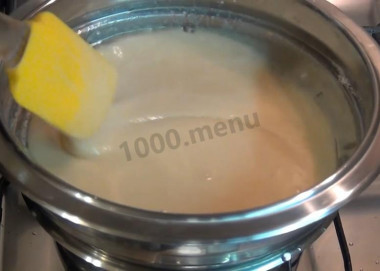
In a minute, the mass will become airy thanks to soda and will rise a little.
Step 16:
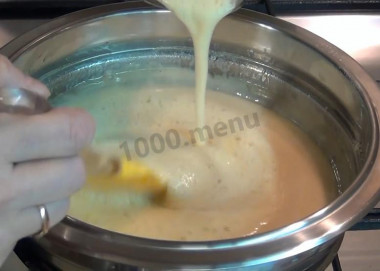
It's time to add the beaten eggs. Pour it in slowly, stirring constantly.
Step 17:
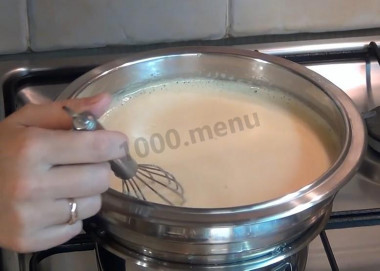
Cook everything together for 3-4 minutes until the mixture increases in volume by 2-3 times.
Step 18:
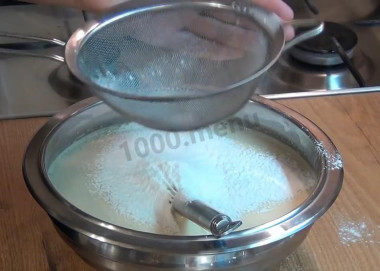
Remove from the steam bath and gradually introduce the sifted flour. Gently mix.
Step 19:
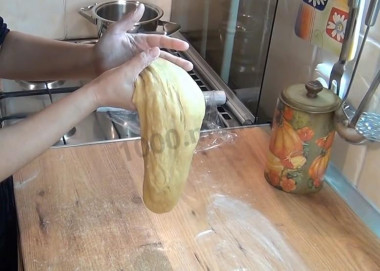
Add flour and knead the dough until it becomes homogeneous, soft, slightly sticky and fluid.
Step 20:
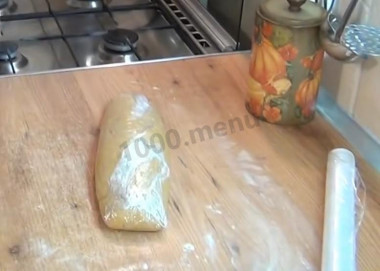
We give the dough the shape of a loaf, wrap it in a film and put it in the refrigerator for 1.5 hours. After the refrigerator, the dough will become dense and less sticky.
Step 21:
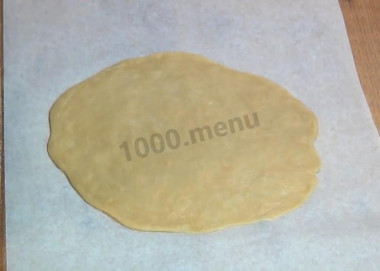
The dough from the refrigerator must be divided 10 times into 11 identical parts. On baking parchment, roll out one part into a tortilla about 2 mm thick and about 20 cm in diameter .
Step 22:
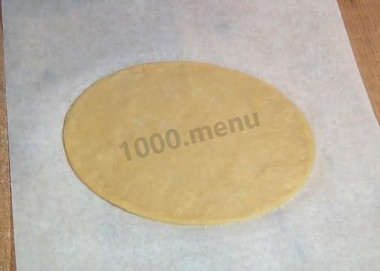
Cut the cake in an even circle, using, for example, a lid from a saucepan.
Step 23:
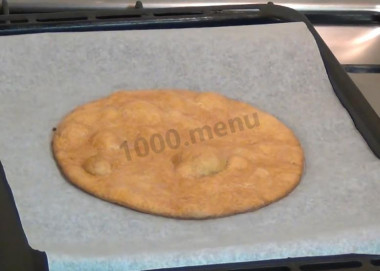
We put it on a baking sheet together with parchment and place it in an oven heated to 180 degrees. After 5 minutes, if the cake has acquired a golden color, we take out and bake the next one.
Step 24:
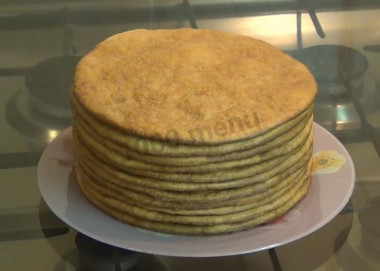
Thus, we prepare all 11 cakes. The cakes are cooling down, we can start preparing the cream.
Step 25:
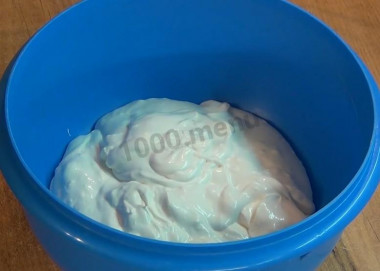
We use sour cream and sugar for the cream.
Step 26:
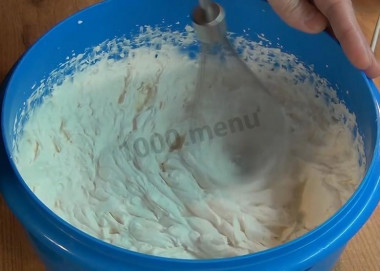
Whisk sour cream with a whisk, add sugar, mix.
Step 27:
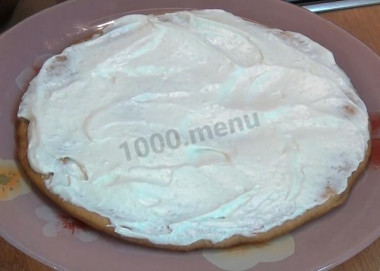
We spread the cakes one on top of each other on a dish, smear sour cream between them.
Step 28:
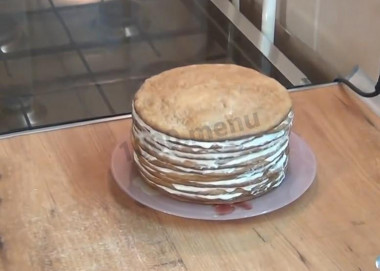
We collect the whole cake and leave it at room temperature to soak for 2 hours.
Step 29:
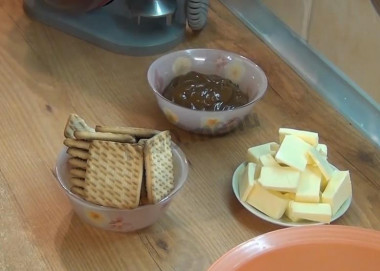
Let's do the cream under the mastic. Ingredients for it: shortbread cookies, butter, boiled condensed milk.
Step 30:
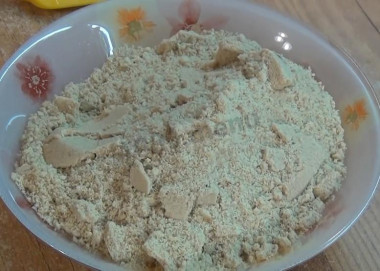
Cookies are crushed in any convenient way.
Step 31:
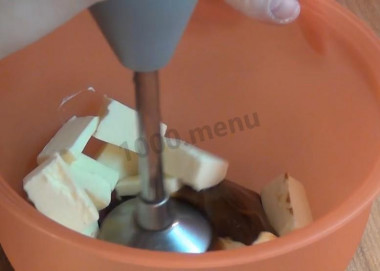
Condensed milk is thoroughly mixed with butter.
Step 32:
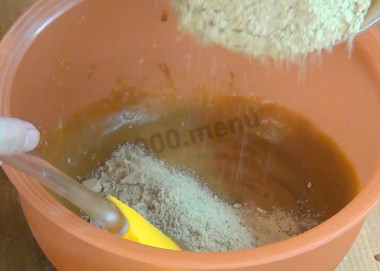
In the resulting homogeneous mixture, we introduce a little crushed cookies and mix.
Step 33:
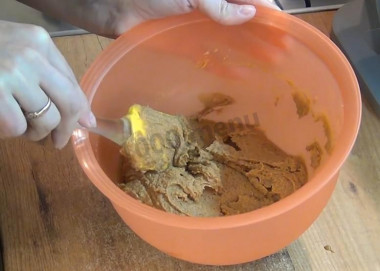
Knead the cream until smooth.
Step 34:
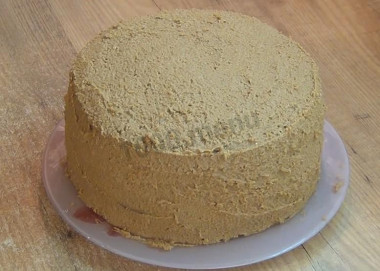
Well, we smear the cake with cream from all sides.
Step 35:
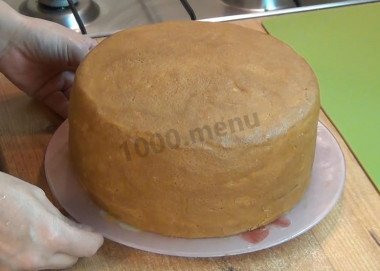
And to solidify the cream, put it in the refrigerator for 4-5 hours. Meanwhile, after some time in the refrigerator, the cream will cool down a little. We take out the cake and level the cream well under the mastic. We put it back in the cold until it completely solidifies.
Step 36:
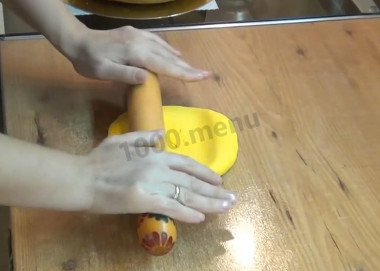
We will cover the cake with yellow mastic. Roll it out into a flat cake, pre-lubricate the table and rolling pin with oil.
Step 37:
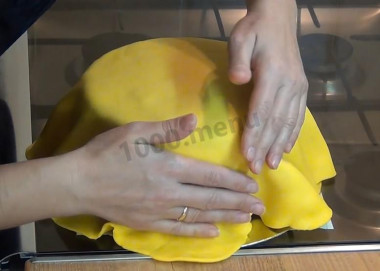
Put the mastic on the cake and smooth out all the folds well. Cut off the excess and make a border at the base of the cake.
Step 38:
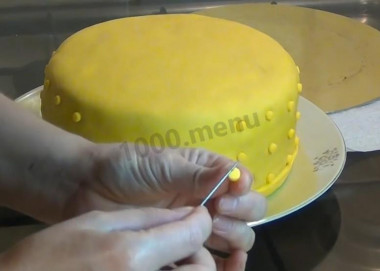
In a circle on the side of the cake we glue pre-prepared, smeared with water, small circles. We leave space, if necessary, for the number.
Step 39:
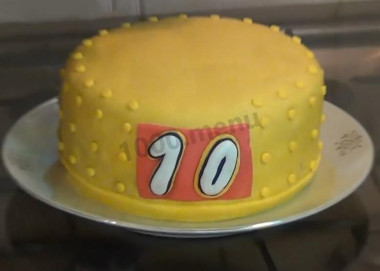
Formalize the number.
Step 40:
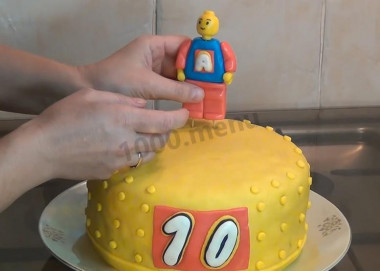
Using toothpicks on top of the cake we attach a figure of a Lego man made of mastic.
Step 41:
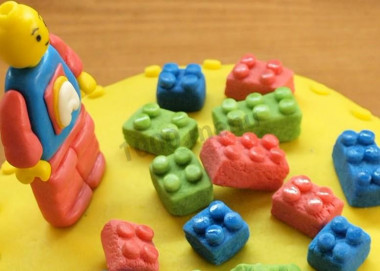
From above, we decorate the cake with a mound of mastic designer details. Now a simple culinary design solution is ready to serve. Good mood and bon appetit!
Caloric content of the products possible in the composition of the dish
- Sour cream of 30% fat content - 340 kcal/100g
- Sour cream of 25% fat content - 284 kcal/100g
- Sour cream with 20% fat content - 210 kcal/100g
- Sour cream of 10% fat content - 115 kcal/100g
- Sour cream - 210 kcal/100g
- Chicken egg - 157 kcal/100g
- Egg white - 45 kcal/100g
- Egg powder - 542 kcal/100g
- Egg yolk - 352 kcal/100g
- Ostrich egg - 118 kcal/100g
- Honey - 400 kcal/100g
- Whole durum wheat flour fortified - 333 kcal/100g
- Whole durum wheat flour, universal - 364 kcal/100g
- Flour krupchatka - 348 kcal/100g
- Flour - 325 kcal/100g
- Granulated sugar - 398 kcal/100g
- Sugar - 398 kcal/100g
- Butter 82% - 734 kcal/100g
- Amateur unsalted butter - 709 kcal/100g
- Unsalted peasant butter - 661 kcal/100g
- Peasant salted butter - 652 kcal/100g
- Melted butter - 869 kcal/100g
- Coffee cookies - 589 kcal/100g
- Waffle cookies - 540 kcal/100g
- Kurabye cookies - 489 kcal/100g
- Butter cookies - 510 kcal/100g
- Chocolate cookies - 406 kcal/100g
- Lemon juice - 16 kcal/100g
- Powdered sugar - 374 kcal/100g
- Baking soda - 0 kcal/100g
- Food coloring - 0 kcal/100g
- Marshmallow - 328 kcal/100g
- Boiled condensed milk - 328 kcal/100g
